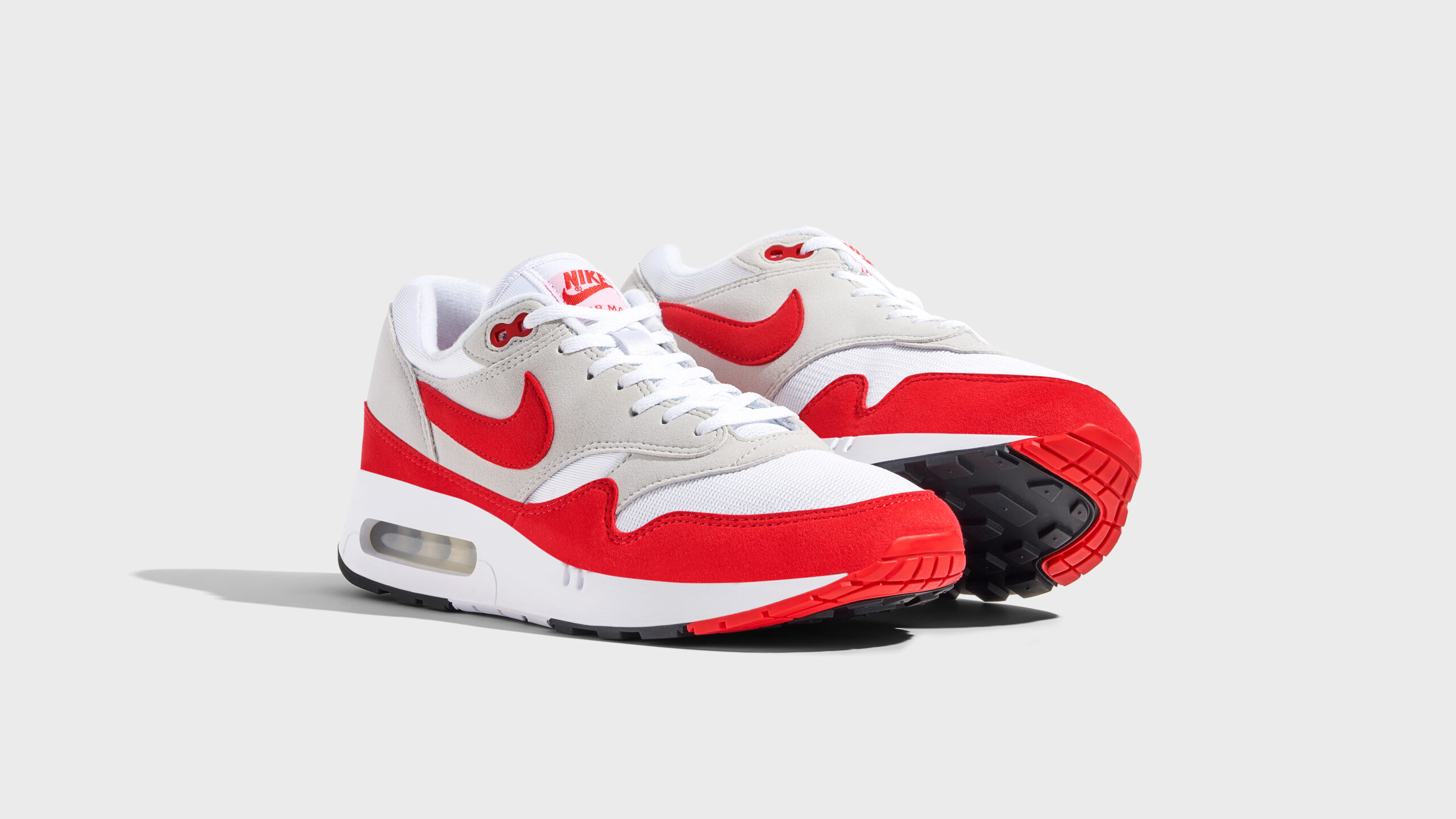For Air Max Day 2023, Nike announced the return of the silhouette that started it all, the Air Max 1 ‘Big Bubble’.
With social media-driven sneaker trends, new styles come and go, but to have an impact beyond the algorithm requires an appeal few have yet to achieve. The Nike Air max 1 was first released in 1987, marketed as a running shoe and the debut of a design aesthetic that would change Nike’s direction forever.
Revolution
Reaching an equilibrium between comfort and style, the Nike Air Max 1 was introduced to the world 35 years ago. “Nike Air Is Not A Shoe” was how consumers first saw Nike’s iconic visible air bubble. This design feature would inspire some of the brand’s most in-demand silhouettes, such as the Air Jordan 4 and a lineage of Air Max models still popular today. Since its initial release, the Air Max 1 has taken many forms, from a focus on athletic performance to a lifestyle favourite seen in collaborations with rappers and fashion brands, laying the foundations for every Nike Air Max sneaker released.
The Nike Air Max 1 was not the first shoe to use Nike Air technology, having been used internally in the Nike Tailwind model. As reported by Highsnobiety, “aeronautical engineer at NASA Frank Rudy encapsulated dense gases into a rubber membrane and pitched the idea to Nike”. The success of the Air bubble technology in the Tailwind allowed a then-young Nike brand to gain momentum, carving a niche in technical footwear. Following the success of the Nike Air in previous models, using new technology became a priority of the brand as it began to pursue innovation. Despite the Airbag being used in the Oregon label’s shoes before, the Nike Air Max 1 was the first to lift the veil on the design, having been concealed in the sole of previous silhouettes.
Lifting the Veil
In light of the Nike Air Max 1’s success, it’s no surprise that the revered Tinker Hatfield is behind the design. His first position at Nike was as a commercial architect, tasked with designing new buildings for the sportswear brand’s Oregon campus in 1981. It was not until 1985 that the now legendary sneaker designer started working on footwear.
As part of the brand’s focus on technology, Nike wanted to increase the width of the Airbag in the shoe to ensure stability, an initiative that was causing problems. The larger Airbag would not fit with the size of the polyurethane used in the midsole. Hatfield’s answer? Show the Air bubble.
Design
Unsurprisingly, architecture was used as Hatfield’s design muse when creating the Air Max 1, drawing inspiration from the controversial Centre Georges Pompidou in Paris, known for ruffling feathers thanks to the visibility of the building’s structural and functional elements. Much like the iconic Parisian architecture that served as Hatfield’s inspiration, the Air Max 1 shifted the focus to the aestheticism of technical design to present a unique silhouette.
Speaking to Highsnobiety, Hatfield described the process of including the visible Air bubble, remembering the reasoning behind the decision: “I thought let’s make the bag a little bit wider, make sure it’s stable, but then let’s go ahead and remove part of the midsole so we can actually see it.” Nike feared including the Air bubble would make the sneaker look weak and easily damaged. Hatfield was persistent with the design, which would nearly cost him his job, confident in the power of the visible Air bubble. In a promotional clip for Nike, Hatfield discusses the design process for the Air Max One, revealing his attitudes to designing the sneaker, stating that “sometimes it’s good as a designer to go further out, and you can always reel it back, and that is exactly what happened”. As with any new release, the first-ever Air max 1 ‘Big Bubble’, encountered teething problems due to the size of the air window, which was prone to cracking in colder temperatures. Nike scaled down the size of the bubble to produce a sneaker most similar to modern Air Max 1 models.
The now Iconic silhouette featured in Nike’s debut ‘Air Revolution’ advert, featuring scenes of the new visible Air bubble being tested in athletic conditions, soundtracked by the 1968 release, ‘Revolution’, by the Beatles. Since then, the ever-popular Nike Air Max 1’s mass appeal has attracted some high profile fans from Iggy Pop to Beyonce.
A cultural icon
Following the shoe’s initial release 36 years ago, the Nike Air Max 1 has attracted sveral collaborators, such as Travis Scott, Patta and Parra. Despite a string of popular releases, an ‘Anniversary Red’ colourway featured as part of a 2017 re-release is the closest many fans had ever got to the original.
To celebrate the shoe that started the Air Max revolution 35 years ago, Nike is releasing the Air Max 1 ‘Big Bubble’ this Air Max day, on the 26 March. Carefully crafted over three years using CT scans to accurately dissect and replicate the original design features, the sneaker is as close to the original as possible. In keeping with the first release, the Air bubble has been constructed to the original measurements, despite the challenges encountered by modern manufacturing processes. The 2023 reissue makes nostalgic nods to the retro design, using unique weathered-print packaging, complete with Nike logo cutouts.
Indulge in the debut of a design champion with the Nike Air Max 1 ‘Big Bubble’. By drawing on influences outside of footwear, the obstacles to Nike’s pioneering technology were overcome to produce a distinctive foundation that would alter the course of the brand.
